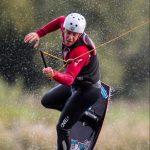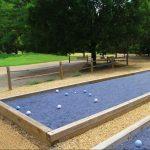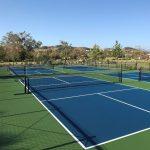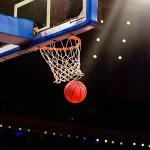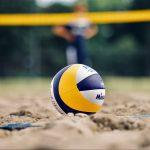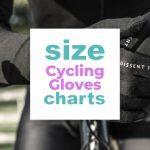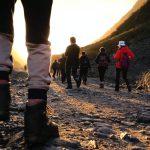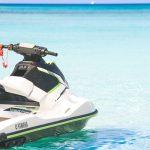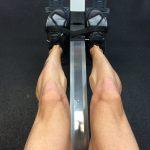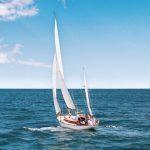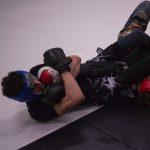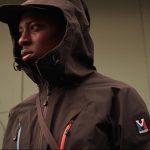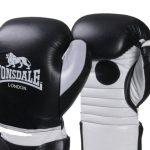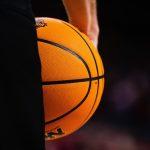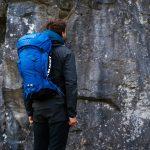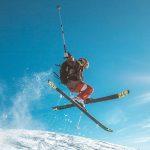Rossignol Alpine Ski Sizes
Alpine skiing refers to the downhill form of traveling over snow on skis. It can be competitive or simply adventurous. It involves sliding down slopes of ice that form around mountains and other hilly terrains (skip straight to the Rossignol Alpine Ski Size Charts).
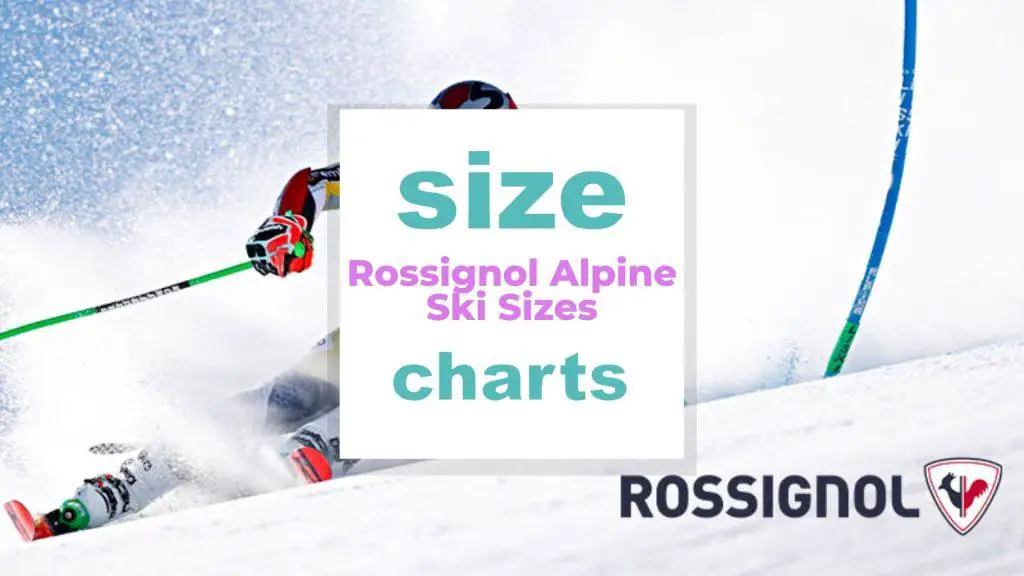
Having the right equipment when skiing is important to ensure your safety and maximize your performance. If you are looking for Rossignol alpine ski sizes, you are in the right place. We’ll quickly cover the ideal sizes to ensure you make a solid choice.
Let’s get down to it!
Jump right into the Frequently Asked Questions
Related: Rossignol Ski Boots Sizes for Adults and Kids, Rossignol Clothing Sizes for Adults and Kids, Rossignol Nordic Ski Sizes
Rossignol Alpine Ski Sizes Table of Contents
- Rossignol Alpine Ski Size Charts
- How to Choose the Right Alpine Ski Sizes
- Types of Alpine Skis
- Frequently Asked Questions
Rossignol Alpine Ski Size Charts
Related: Ski helmet size chart
Alpine Ski Sizes
| PISTE (React/Nova) | ALL MOUNTAIN (Experience) | FREERIDE (7 Series) | |
| Beginner skiers | Your height – 10 cm/3.9 in | Your height – 10 cm/3.9 in | Your height – 5 cm/2 in |
| Intermediate skiers | Your height – 7 cm/2.8 in | Your height – 5 cm/2 in | Your height |
| Experienced skiers | Your height – 5 cm/2 in | Your height | Your height |
| Expert skiers | Your height | Your height + 5 cm/2 in | Your height + 5 cm/2 in |
Alpine Poles Size Chart
Related: Skiing Socks Size Guide for men, women and kids (with size charts)
| Skier height | Pole Size | ||
| Meters | Feet | Centimeters | Inches |
| 1.00 m | 2’6” – 2’8″ | 70 cm | 28 inches |
| 1.05 –-1.10 m | 2’9” – 3’0″ | 75 cm | 30 in |
| 1.15 m | 3’1” – 3’4″ | 80 cm | 32 in |
| 1.20 m | 3’5″ – 3’8″ | 85 cm | 34 in |
| 1.25 – 1.30 m | 3’9″ – 4’0″ | 90 cm | 36 in |
| 1.35 m | 4’1″ – 4’4″ | 95 cm | 38 in |
| 1.40 – 1.45 m | 4’5″ – 4’8″ | 100 cm | 40 in |
| 1. 50 m | 4’9″ – 5’0″ | 105 cm | 42 in |
| 1.55 – 1.60 m | 5’1″ – 5’3″ | 110 cm | 44 in |
| 1.65 m | 5’4″ – 5’6″ | 115 cm | 46 in |
| 1.70 – 1.75 m | 5’7″ – 5’9″ | 120 cm | 48 in |
| 1.80 m | 5’10” – 6’0″ | 125 cm | 50 in |
| 1.85 m | 6’1″ – 6’3″ | 130 cm | 52 in |
| 1.90 – 1.95 m | 6’4″ – 6’6″ | 135 cm | 54 in |
| 2.00 m | 6’7″ + | 140 cm | 56 in |
Alpine Ski Boot Size Charts
Related: Ski Boots Size Chart – Measurements And Fitting, Danner Boots Size for Men and Women, 5.11 Boots Size Charts for Men and Women
Men’s Alpine Ski Boots Sizes
| Foot length (centimeters) | Foot length (inches) | Size |
| 24.0 cm | 9.45 in | 24 |
| 24.5 cm | 9.64 in | 24.5 |
| 25.0 cm | 9.84 in | 25 |
| 25.5 cm | 10.04 in | 25.5 |
| 26.0 cm | 10.24 in | 26 |
| 26.5 cm | 10.43 in | 26.5 |
| 27.0 cm | 10.63 in | 27 |
| 27.5 cm | 10.83 in | 27.5 |
| 28.0 cm | 11.02 in | 28 |
| 28.5 cm | 11.22 in | 28.5 |
| 29.5 cm | 11.61 in | 29.5 |
| 30.5 cm | 12.00 in | 30.5 |
| 31.5 cm | 12.40 in | 31.5 |
| 32.0 cm | 12.60 in | 32.5 |
| 33.0 cm | 12.99 in | 33 |
Women’s Alpine Ski Boots Sizes
| Foot length (centimeters) | Foot length (inches) | Size |
| 22.0 cm | 8.66 in | 22 |
| 22.5 cm | 8.86 in | 22.5 |
| 23.0 cm | 9.05 in | 23 |
| 23.5 cm | 9.25 in | 23.5 |
| 24.0 cm | 9.45 in | 24 |
| 24.5 cm | 9.64 in | 24.5 |
| 25.0 cm | 9.84 in | 25 |
| 25.5 cm | 10.04 in | 25.5 |
| 26.0 cm | 10.24 in | 26 |
| 26.5 cm | 10.43 in | 26.5 |
| 27.0 cm | 10.63 in | 27 |
| 27.5 cm | 10.83 in | 27.5 |
Junior Alpine Ski Boots Size Chart
| Foot length (centimeter) | Foot length (inches) | Size |
| 15.5 cm | 6.10 in | 15.5 |
| 16.0 cm | 6.30 in | 16 |
| 16.5 cm | 6.50 in | 16.5 |
| 17.0 cm | 6.70 in | 17 |
| 17.5 cm | 6.89 in | 17.5 |
| 18.5 cm | 7.28 in | 18.5 |
| 19.0 cm | 7.48 in | 19 |
| 19.5 cm | 7.67 in | 19.5 |
| 20.0 cm | 7.87 in | 20 |
| 20.5 cm | 8.07 in | 20.5 |
| 21.0 cm | 8.27 in | 21 |
| 21.5 cm | 8.46 in | 21.5 |
| 22.0 cm | 8.66 in | 22 |
| 22.5 cm | 8.86 in | 22.5 |
| 23.0 cm | 9.05 in | 23 |
| 23.5 cm | 9.25 in | 23.5 |
| 24.0 cm | 9.45 in | 24 |
| 24.5 cm | 9.64 in | 24.5 |
| 25.0 cm | 9.84 in | 25 |
| 25.5 cm | 10.04 in | 25.5 |
| 26.0 cm | 10.24 in | 26 |
| 26.5 cm | 10.43 in | 26.5 |
| 27.0 cm | 10.63 in | 27 |
| 27.5 cm | 10.83 in | 27.5 |
How to Choose the Right Alpine Ski
Related: Skiing Gloves Size Guide – Determine Your Glove Size, Helly Hansen Shoes Size: Men, Women, Kids, Oakley Boots Size Charts: Men, Women
The right alpine ski for you depends on factors like your skill level, personal preference, and some technical details about skis. We’ll look at them more closely below.
i. Proficiency
This is perhaps the most crucial element when choosing a ski. If you have no idea about your level of skiing skill, don’t worry. Below is a brief overview of different proficiency levels in the skiing discipline.
- Beginner – you are venturing into skiing for the first time, and your skiing pace is slow. You are comfortable side slipping and snow plowing on blue or green slopes.
- Intermediate – You are getting bolder with turns and parallel skiing. Red slopes are now easier to explore.
- Experienced – this is a seasoned skier that can ski on a slope of any color. However, there’s still room to better your performance.
- Expert – skiing comes naturally to you, and you can move smoothly on and off the piste. Advanced skiers can execute turning techniques professionally and aren’t afraid of any terrain.
ii. Ski Size
As you may have noticed, the right ski size could depend on the type of skier. Nevertheless, you should also consider your height and skiing style.
A beginner should start with a smaller ski, but as your skill improve, you can choose longer skis. A longer ski is better for aggressive skiers who need more stability and lift for skiing at high speeds.
Check out the Alpine Ski Size Chart in the previous section for a better picture of the best ski size for you.
iii. Features of an Alpine Ski
It’s also important to know the parts of a ski before you buy one. A ski has five main features, and we’ll discuss each.
- The tip – this is the part in front of the ski, and it comes in different widths. A wider tip is great for increased stability or float, while a narrow tip is excellent for enhanced precision. The length of the tip is also crucial. A long tip offers better handling, while a sharp tip provides more stability and snow contact.
- The rocker – the raised sections on the front and back of your ski are the rockers. A ski with two rockers is called a double rocker, while one with a single rocker is called a simple rocker. The higher your rocker reaches, the better the pivoting and turning capabilities you’ll have.
- The waist – this is the part of the ski that’s under your boot as you glide. The waist width will differ for each skier. A narrow waist offers precision and responsiveness as you ski. A medium waist is ideal for any type of snow, including deep snow, fresh snow, and soft snow. A wide waist provides higher stability and floats on snow.
- The tail – this is the rear end of your ski. If it doesn’t feature a rocker, it can be round for better handling or straight for precision. A ski with a rear rocker has better stability.
- The camber – refers to the curve a ski has when you place it on a flat surface without stepping on it or adding binders. There are three types of camber.
- Traditional camber – this camber provides snow contact at the back and front, making it great for groomed slopes.
- Flat camber – for this camber, every part of the ski has contact with the snow. It’s an ideal choice for freestyle skiing.
- Reverse camber – this type of camber gives contact at one main point of the ski. It’s great for freeriding.
Check out this video to learn more about the Rossignol Alpine Ski brand
Types of Alpine Skis
Related: How To Measure Your Foot Size & Width, Easy EU to US shoe size conversion with size tables (foot length, IN, Cm)
Alpine skiing can take different forms depending on your level of expertise. Rossignol also categorizes skis according to where you use them. So let’s quickly look at your options.
1. On-Piste Skis
A piste refers to a downhill ski trail that a skier follows. Some skiers are only comfortable skiing on trails, while others prefer unexplored terrain. Rossignol Piste Range has multiple options for both the occasional skier as well as the experienced one. These skis are flexible, responsive, and easy to handle.
2. Racing Skis
This option is for powerful skiers that need great equipment that can give them an edge over competitors in races. Rossignol racing skis meet all International Ski Federation requirements, making them a great choice for competitive skiing.
You need a perfect technique to use these skis competently, so you should ensure that you’ve achieved an expert skiing level before purchasing them.
3. All-Mountain Skis
All-Mountain skis are made for a piste skier eager to try out new terrain. If you feel that you’re ready to ski off-piste, this ski range is ideal. These skis are designed to adapt to different surfaces. We recommend you start with a ski with a wider waist for more stability, and you can get a narrower one as your confidence increases.
4. Freeride Skis
Freeride skiing doesn’t have a defined goal, course, or set of rules. If you want to discover new skiable terrain, these skis are the best. You can learn more about choosing freeride skis in this guide.
5. Touring Skis
Ski touring is done in unpatrolled areas and similar terrain. Rossignol offers three types of touring skis, including all-around, free touring, and fitness touring skis.
Frequently Asked Questions
1. What length of Rossignol alpine skis do I need?
Your ideal ski length should be about the height of your chin. To find it, subtract about 5 to 10 cm from your actual height.
2. Are 180 cm skis for what height?
You should have a height of 6 feet or 1.8 meters.
3. What size are Rossignol alpine skis for a 5’9 male?
The ski should be 119 cm in length.
4. How wide are Rossignol alpine skis?
Rossignol alpine skis have different widths, and you can choose one depending on your expertise level.
5. What are the different types of Rossignol alpine skis?
Rossignol alpine skis include on-piste, racing, all-mountain, freeriding, and touring skis.
6. What factors should you consider when buying Rossignol alpine skis?
The factors include your skiing proficiency, the ski size, and the technical specifics of the alpine ski.
7. What height pole size is ideal for alpine skiing?
It should be 30 centimeters less than your actual height.
Conclusion
Alpine skiing can be an exhilarating experience if you have the right equipment. With our charts, you can choose the right size for every piece of alpine skiing equipment you need. If you have any questions about this topic, leave them below.
Picture in this post is by Alain Wong on Unsplash
Related to Rossignol Alpine Ski Sizes
- O’Neill Wetsuit Size Charts
- Bocce Ball Court Size and Dimensions
- Pickleball Court Vs. Tennis Court
- Basketball Hoop Rim Size and Diameter
- Ping-Pong Ball Size Chart
- Baseball Size and Dimensions
- Soccerball Size Guide and Dimensions
- Bocce Ball Size Chart
- Basketball Size Guide
- Tennis Ball Size Guide and Dimensions
- Volleyball Size Chart
- Cycling gloves size charts
- Steps Calculator: Steps in a km + Distances
- Jet Ski Size: Which Size Should You Go For?
- Rowing Machine Sizes and Types
- Sailboat Size Guide for Beginners and PROs
- Martial Arts Ring Sizes
- Hummel Size Charts
- Millet Clothing Size Charts
- Lonsdale Boxing Sizes
- Sports Ball by Size
- Mammut Bags and Backpacks Sizes
- Nordica Ski Sizes for Adults and Kids
- Navigare Size Charts: clothes, hats, shirts…
- Hoka Shoes Size Chart: Do Hokas Run True To Size?

